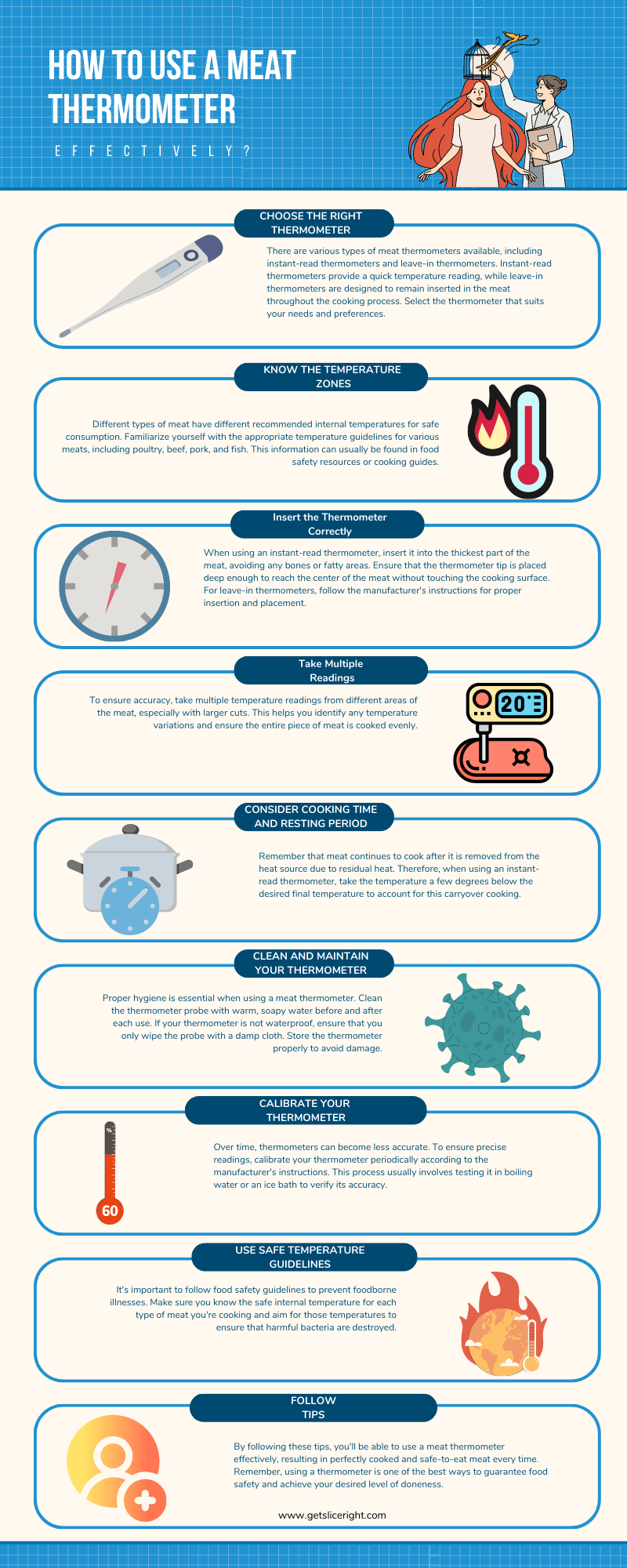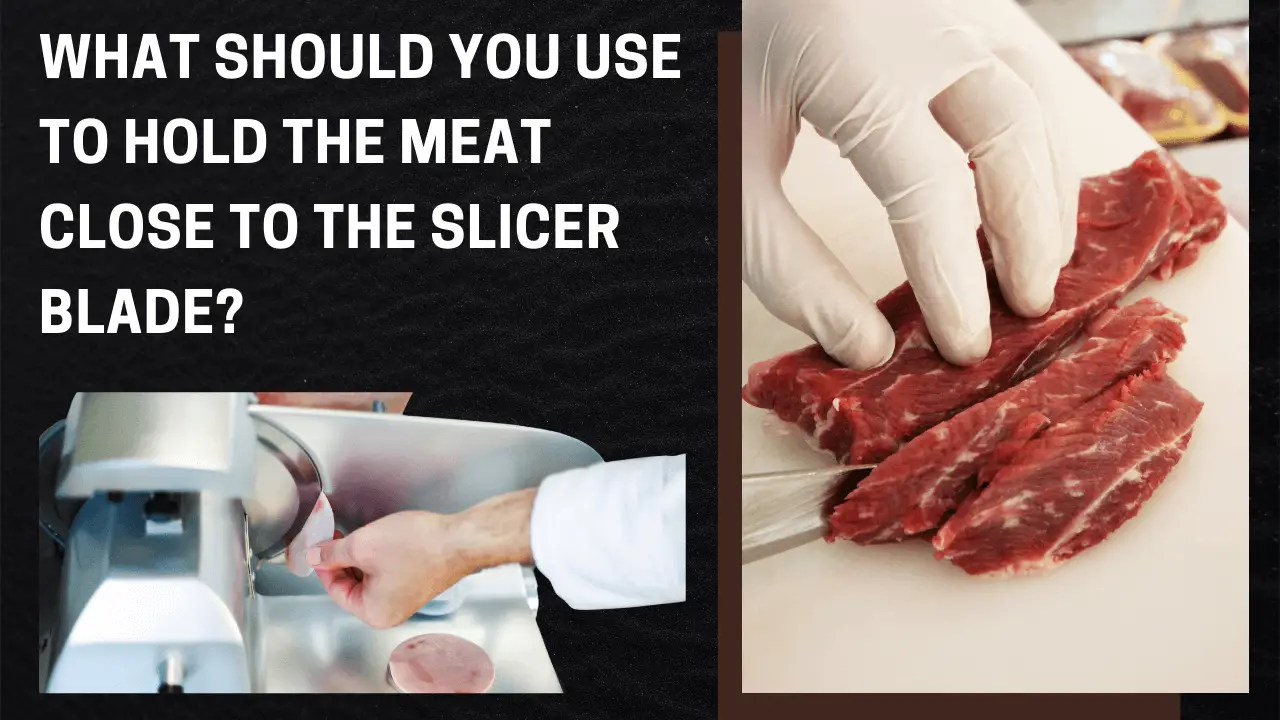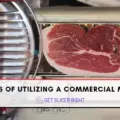Using a meat thermometer effectively is essential for achieving perfectly cooked meat and ensuring food safety. It involves understanding the correct placement of the thermometer in the meat, knowing the appropriate cooking temperatures for different types of meat, and properly cleaning and storing the thermometer after use. When used correctly, a meat thermometer can eliminate the guesswork and give you confidence that your meat is safely cooked to your desired level of doneness, enhancing both the flavor and safety of your culinary creations.
How To Use A Meat Thermometer Effectively?
Step 1: Pick the Right Thermometer for the Job
Before you get all fired up, make sure you choose the right thermometer for your cooking needs. If you’re whipping a quick steak, an instant-read thermometer is your go-to tool. On the other hand, if you’re roasting a large turkey, a probe or oven-safe thermometer might be more your speed.
Step 2: Know Your Meat’s Ideal Temperature
Different meats require different internal temperatures to be considered safe and properly cooked. Here’s a quick rundown of some common meats and their ideal internal temperatures:
- Beef, Lamb, and Veal: 145°F (medium-rare), 160°F (medium), 170°F (well done)
- Pork: 145°F (medium-rare), 160°F (medium), 170°F (well done)
- Poultry: 165°F (chicken and turkey, both whole and pieces)
- Fish: 145°F (cooked through)
Step 3: Insert the Thermometer Correctly
The key to accurate temperature readings lies in placing the thermometer correctly. For most meats, aim for the thickest part, away from the bone, fat, or gristle. With poultry, the best spot is usually the thigh or the thickest part of the breast.
Step 4: Give It Time
Patience is a virtue, my friend! Allow the thermometer to sit for a few seconds (or longer, depending on the type of thermometer) to get an accurate reading.
Step 5: Clean and Store
Once you’ve nailed that perfect temperature, clean your thermometer with hot, soapy water to avoid cross-contamination. Store it in a safe, dry place until your next culinary adventure.
Types Of Meat Thermometers
There are many kinds of meat thermometers available on the market today. Some of the most common types are the following:
- Basic Meat Thermometers: These thermometers are the most basic and inexpensive option. They generally have a long metal probe with a temperature gauge. The probe is inserted into the cooked meat and takes the food’s internal temperature.
- Digital Thermometers: Digital thermometers are more accurate than analog models. They will register the temperature of the meat quickly and provide a precise reading. Digital thermometers have various features, so reading the instructions before using them is important. It is also important to note that digital thermometers should not be left in the food for too long as they can cause overcooking.
- Infrared Gun Thermometer: If you want an even more accurate temperature reading and a faster response, try an infrared gun thermometer. Simply point the gun at your meat and press the trigger. The LCD display will give you a temperature readout almost instantly! Infrared thermometers can measure temperatures when grilling or cooking indoors, like in the oven or stovetop.
- Instant-Read Thermometers: This thermometer is also inserted into cooked meat to take its temperature. Unlike oven-safe thermometers, they are not left in the meat while it cooks and should be used towards the end of cooking to get an accurate temperature reading. To use this type of thermometer, insert it into the thickest part of your cooked meat and wait 10-15 seconds before reading. When using instant-read thermometers, always clean them before and after use with hot soapy water.
Tips For A Caring Meat Thermometer
Once you have selected the right thermometer for your cooking needs, it’s important to take care of it to get the most accurate readings. Here are some tips for properly using and caring for a meat thermometer:
- Clean the probe before and after each use. This is especially important when measuring different types of food.
- Avoid submerging the thermometer in water or using it with wet ingredients.
- Always insert the probe at least 2 inches into the meat so it is fully submerged and not touching any bones.
- If there is a calibration feature on your thermometer, use it once a month to ensure accuracy.
- Store the thermometer safely when not in use, such as in a drawer or hanging on a hook.
- If your thermometer runs on batteries, replace them regularly and follow the manufacturer’s instructions.
Benefits Of Using Meat Thermometers
Using a meat thermometer may seem like an extra step in cooking, but it’s a simple and effective way to ensure your meat is perfectly cooked. Let’s explore the many benefits of using a meat thermometer in your kitchen:
1. Food Safety
One of the primary benefits of using a meat thermometer is to ensure that your meat reaches a safe internal temperature, reducing the risk of foodborne illnesses. Different types of meat have specific temperature guidelines to kill harmful bacteria, such as salmonella and E. coli. A meat thermometer allows you to measure these temperatures and cook your meat safely and accurately.
2. Perfectly Cooked Meat
There’s nothing worse than cutting into a beautifully cooked piece of meat only to find that it’s undercooked or overcooked. Using a meat thermometer takes the guesswork out of cooking meat, ensuring it’s always cooked to your desired level of doneness. Say goodbye to dry, overcooked meat and hello to juicy, tender deliciousness.
3. Consistent Results
A meat thermometer allows you to achieve consistent results when cooking meat, regardless of the type, size, or cut. By monitoring the internal temperature, you can ensure that your meat is cooked evenly and thoroughly, even with varying cooking conditions such as oven temperatures or outdoor grilling.
4. Energy Efficiency
Overcooking your meat results in a less-than-ideal meal and wastes energy. Using a meat thermometer to determine when your meat is done, you can avoid unnecessary oven or grill time, reducing energy consumption and saving money on your energy bills.
6. Versatility
While meat thermometers are designed primarily for measuring the temperature of meat, they can also be used for various other cooking tasks. From checking the temperature of casseroles and baked goods to monitoring oil temperature for deep-frying, a meat thermometer is a versatile tool that can make a big difference in your cooking.
FAQs
Do you leave a meat thermometer in the meat while cooking?
Yes, you should insert it at the begging of the cooking time, but be sure not to let it touch any bone or fat. You should also check the temperature regularly and adjust the heat to ensure even cooking. It is best to wait until the end of the cooking process before checking the meat’s final temperature. If you leave it in too long, it may overcook the meat.
How do you know when meat is cooked with a thermometer?
Insert the thermometer away from fat and bone in the thickest part of the meat. Ensure that you are inserting it deep enough to get an accurate reading. The thermometer should not touch anything else but the meat. If the temperature reaches 75 degrees, then the meat is fully cooked.
How accurate are meat thermometers?
The accuracy of the readings provided by a meat thermometer can vary depending on how you use it. Usually, they are accurate within 2 degrees Fahrenheit.
Can a meat thermometer be wrong?
Yes, a meat thermometer can be wrong. If it is not in the correct position in the center of the thickest part of the meat or if it is not inserted into the meat, then you may get an inaccurate reading. Also, you may have incorrect readings if you do not calibrate your thermometer regularly. If your thermometer has an offset calibration, it should be adjusted to read the correct internal meat temperature.
Conclusion

The most important thing to remember when using a meat thermometer is to be used correctly to ensure your food’s safety and the desired doneness. Use a digital thermometer if possible, as they are more accurate than traditional dial types. Ensure the probe is inserted into the thickest part of the meat, ensuring it does not touch the bone or fat. Check the temperature of your food regularly to ensure that it has reached a safe internal temperature, and then remove it from the heat source when ready. Use these tips to become an expert in using a meat thermometer for delicious and safe meals.

Mario Batali is a renowned author, food enthusiast, and passionate chef who has dedicated his life to exploring the world of culinary arts. With a love for sharing his knowledge and experiences, Mario has become a prominent figure in the food blogging community, inspiring countless readers with his creativity and expertise.
In addition to his culinary prowess, Mario Batali is also a talented writer with a flair for engaging storytelling. He launched his own food blog to share his recipes, cooking tips, and personal experiences in the kitchen. Over time, Mario’s blog gained a loyal following of food enthusiasts who appreciate his unique approach to cooking and his dedication to using only the finest ingredients.
Mario Batali’s passion for food and his commitment to sharing his knowledge with others have made him a true inspiration in the world of culinary arts. Through his blog, cookbooks, and public appearances, Mario continues to spread his love of food and the joy of cooking with his ever-growing fanbase.







